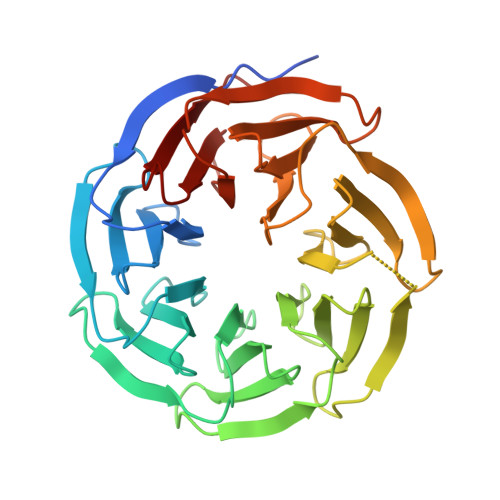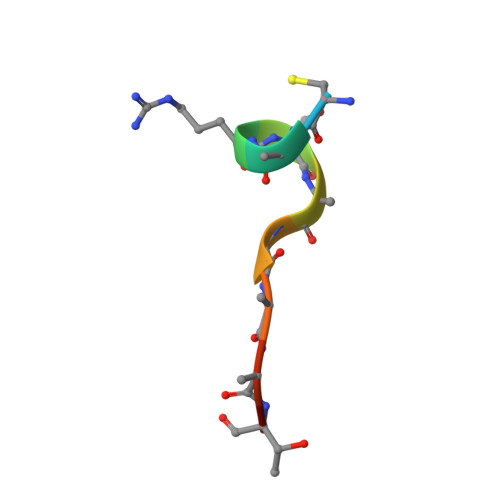The plasticity of WDR5 peptide-binding cleft enables the binding of the SET1 family of histone methyltransferases.
Zhang, P., Lee, H., Brunzelle, J.S., Couture, J.F.(2012) Nucleic Acids Res 40: 4237-4246
- PubMed: 22266653
- DOI: https://doi.org/10.1093/nar/gkr1235
- Primary Citation of Related Structures:
3UVK, 3UVL, 3UVM, 3UVN, 3UVO - PubMed Abstract:
In mammals, the SET1 family of lysine methyltransferases (KMTs), which includes MLL1-5, SET1A and SET1B, catalyzes the methylation of lysine-4 (Lys-4) on histone H3. Recent reports have demonstrated that a three-subunit complex composed of WD-repeat protein-5 (WDR5), retinoblastoma-binding protein-5 (RbBP5) and absent, small, homeotic disks-2-like (ASH2L) stimulates the methyltransferase activity of MLL1. On the basis of studies showing that this stimulation is in part controlled by an interaction between WDR5 and a small region located in close proximity of the MLL1 catalytic domain [referred to as the WDR5-interacting motif (Win)], it has been suggested that WDR5 might play an analogous role in scaffolding the other SET1 complexes. We herein provide biochemical and structural evidence showing that WDR5 binds the Win motifs of MLL2-4, SET1A and SET1B. Comparative analysis of WDR5-Win complexes reveals that binding of the Win motifs is achieved by the plasticity of WDR5 peptidyl-arginine-binding cleft allowing the C-terminal ends of the Win motifs to be maintained in structurally divergent conformations. Consistently, enzymatic assays reveal that WDR5 plays an important role in the optimal stimulation of MLL2-4, SET1A and SET1B methyltransferase activity by the RbBP5-ASH2L heterodimer. Overall, our findings illustrate the function of WDR5 in scaffolding the SET1 family of KMTs and further emphasize on the important role of WDR5 in regulating global histone H3 Lys-4 methylation.
Organizational Affiliation:
Ottawa Institute of Systems Biology, Department of Biochemistry, Microbiology and Immunology, University of Ottawa, Ottawa, ON, Canada.















